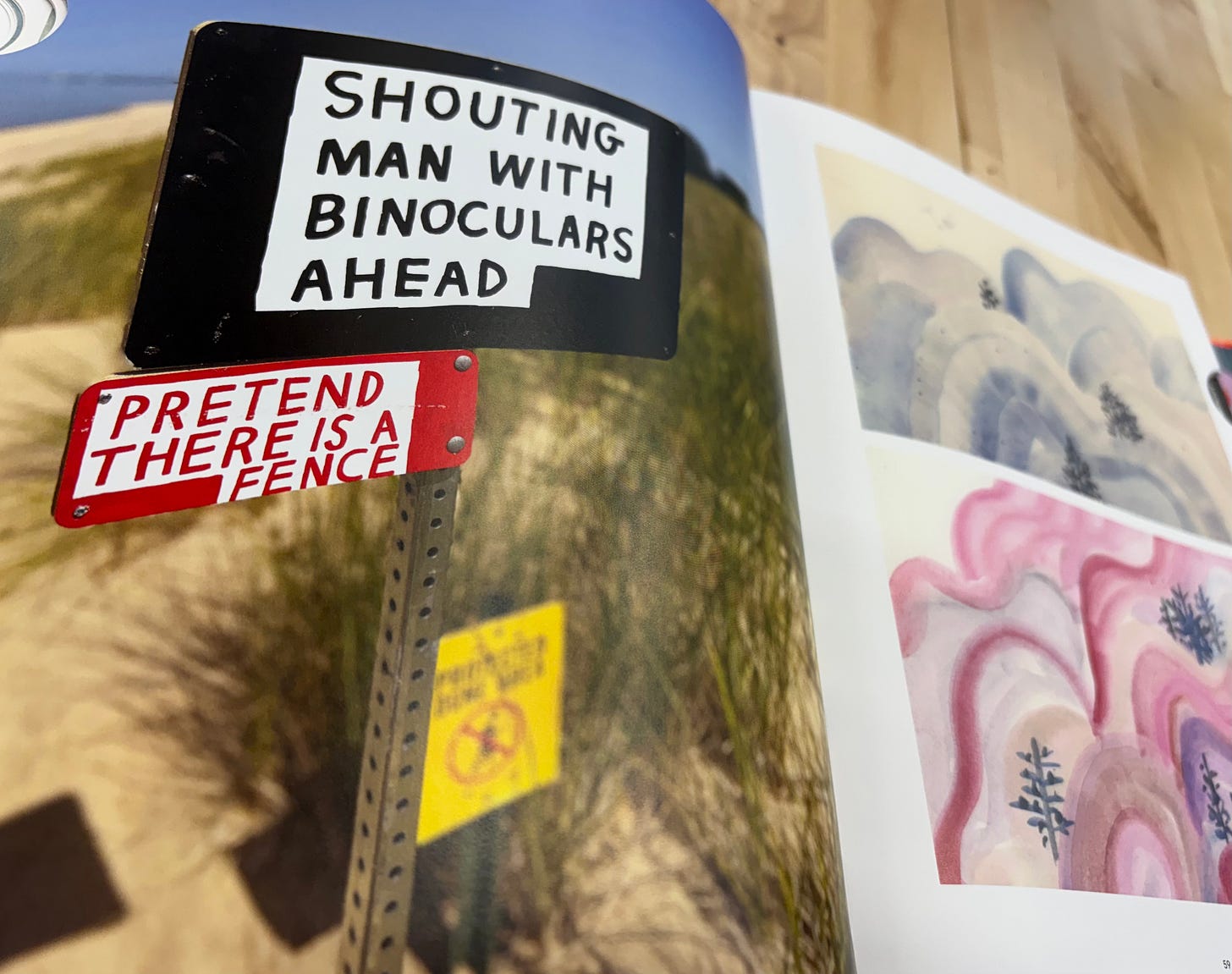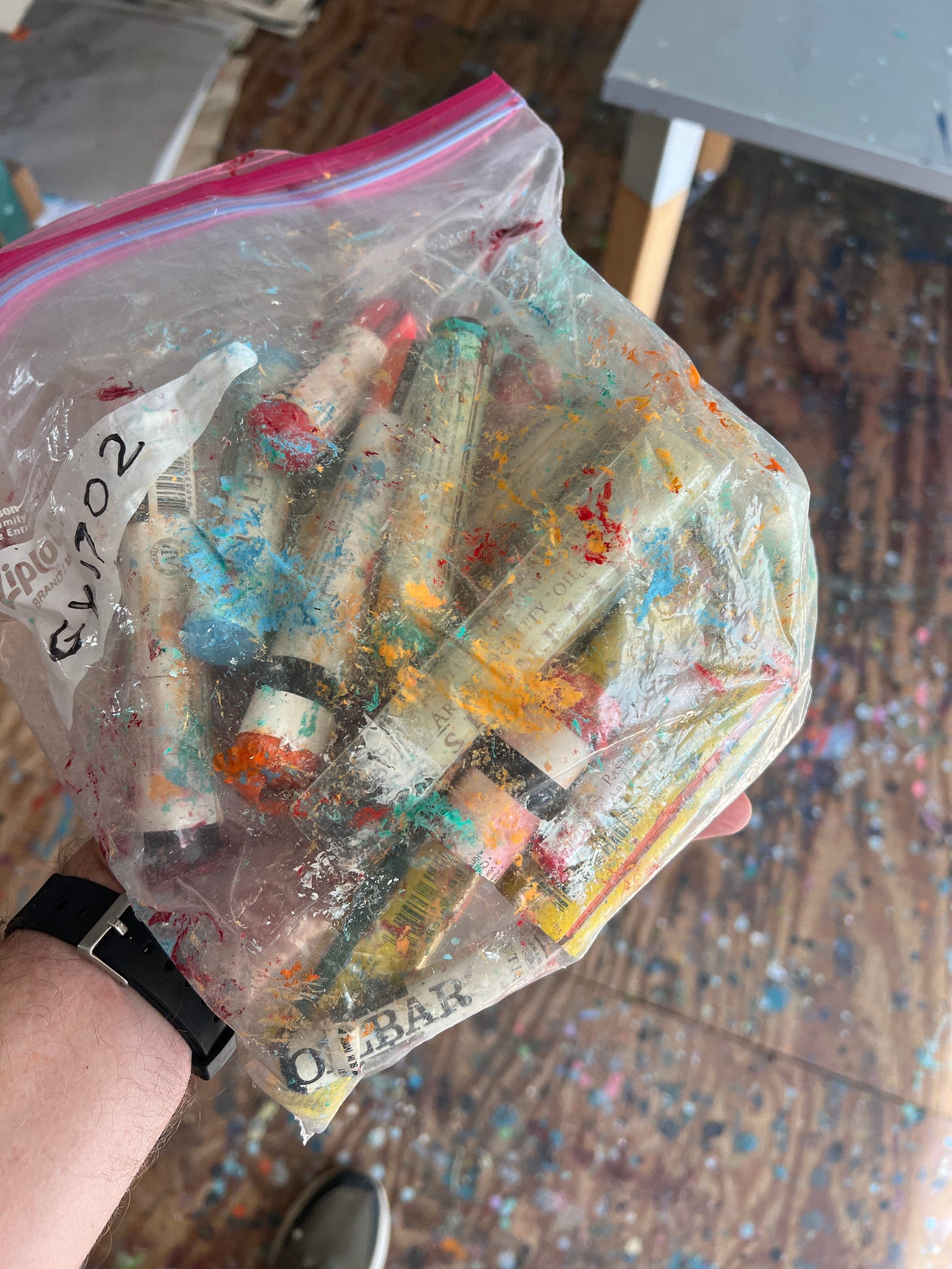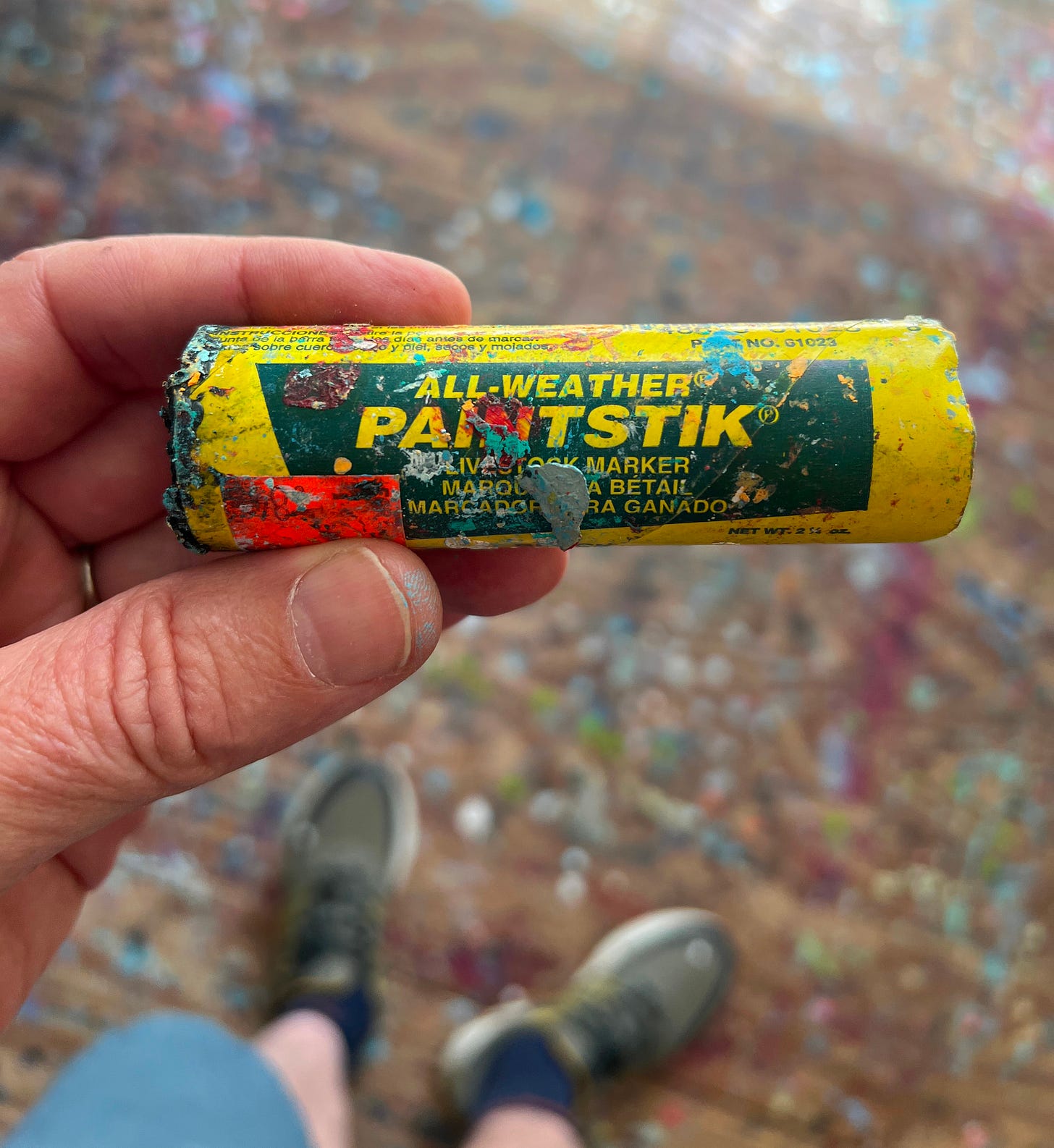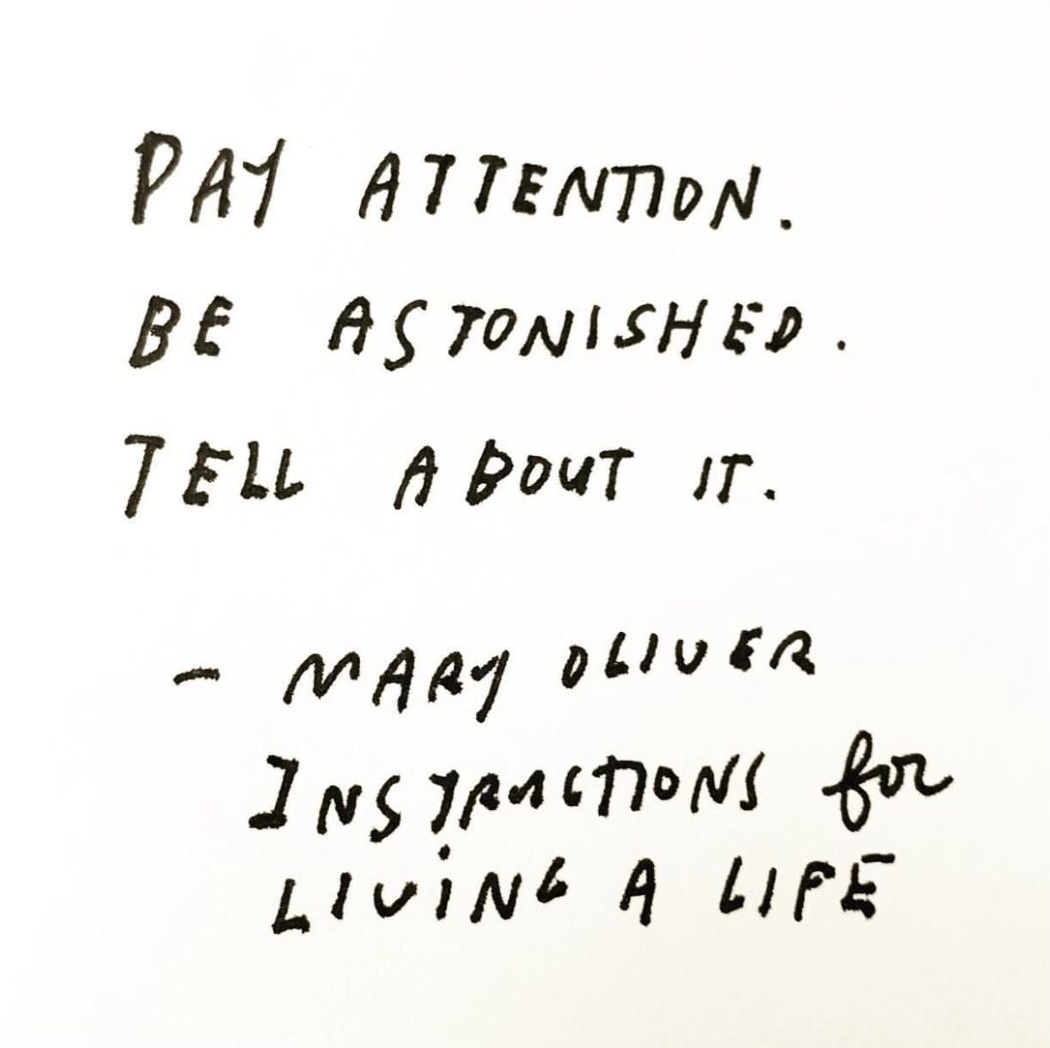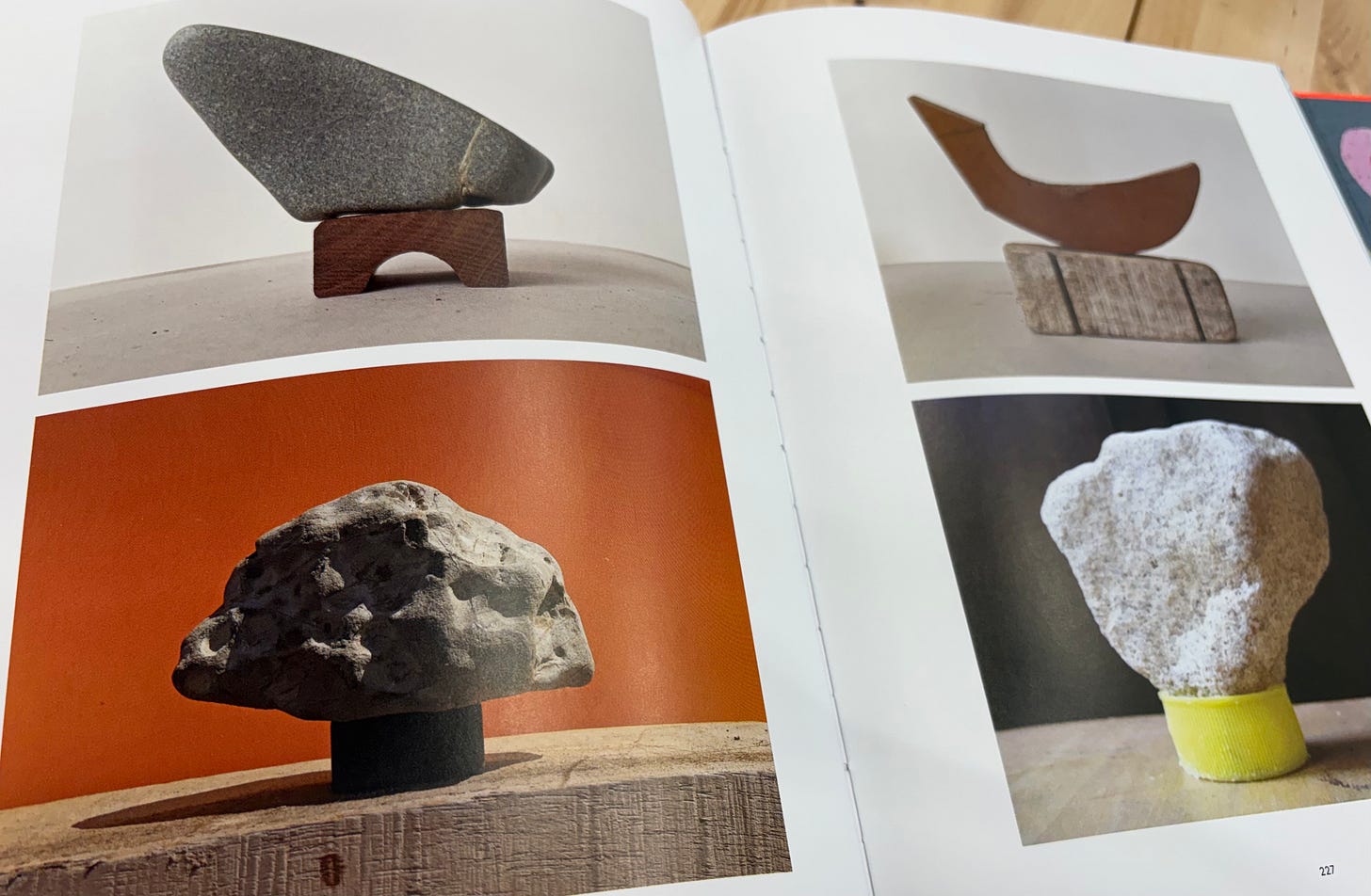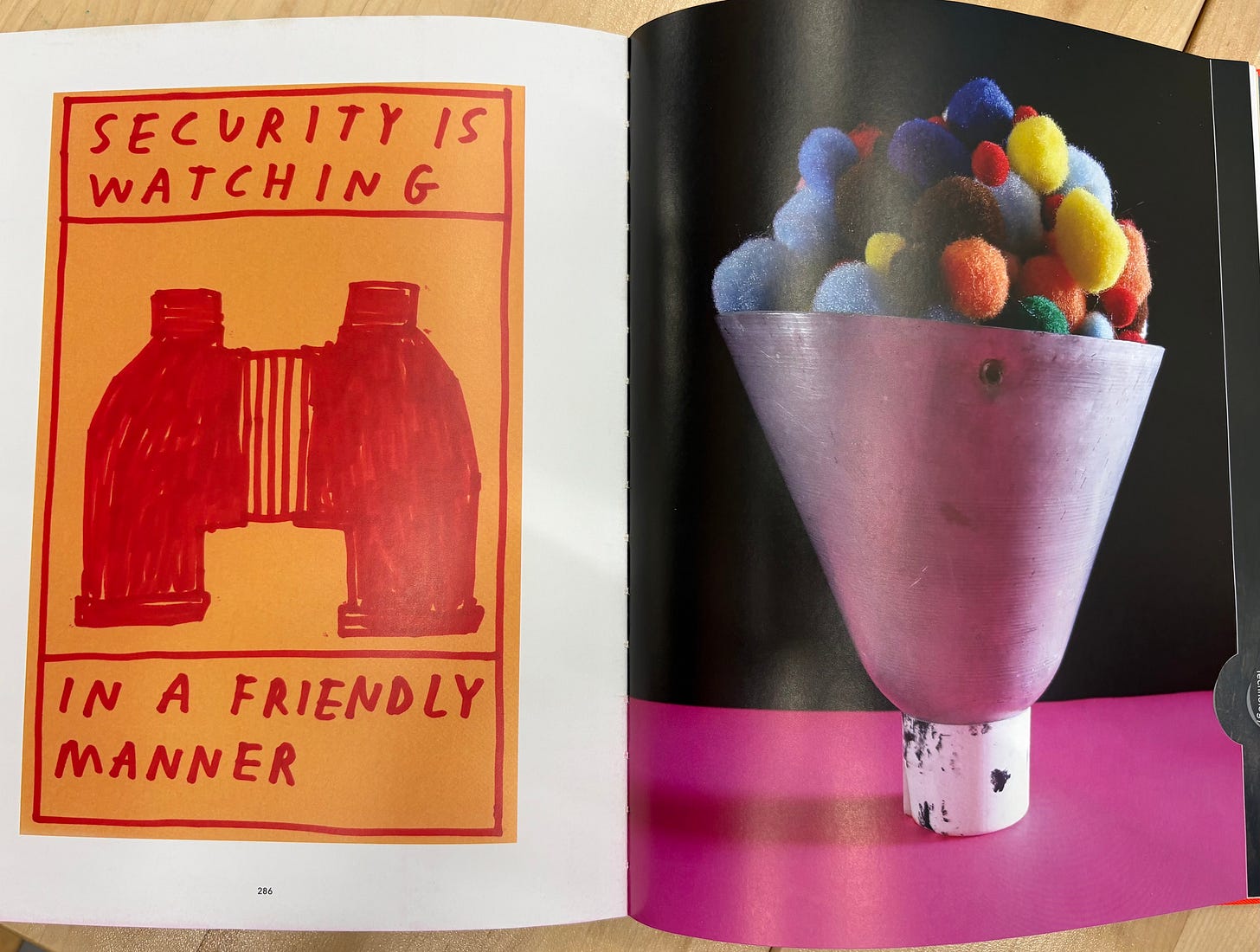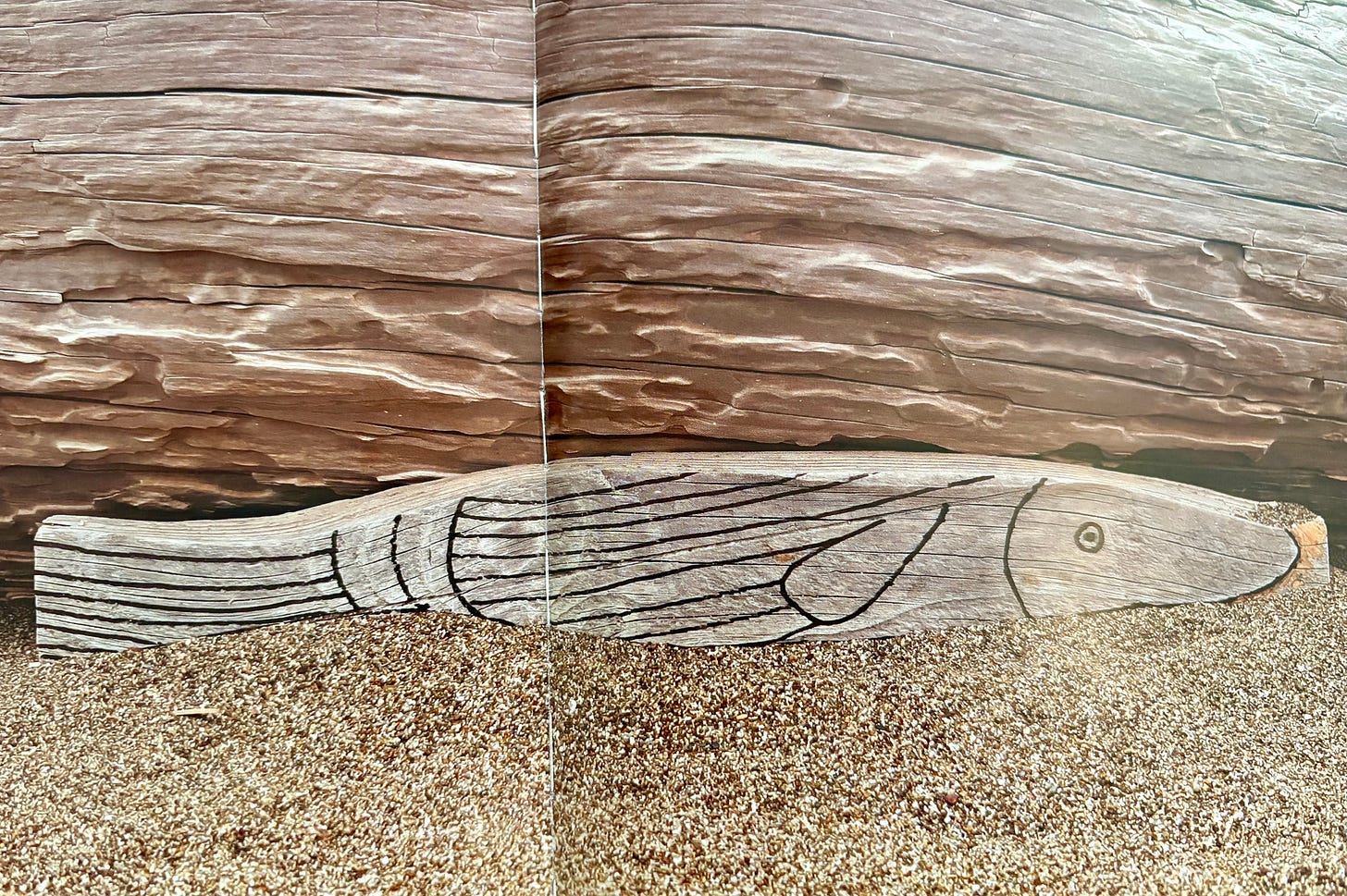Paying Attention with Tucker Nichols
Looking for unexpected aesthetics with one of my favorite artists.
🚨🖊️ART SUPPLY ALERT FOR NEXT WEEK: BALLPOINT PENS. If you’re like me, you already have a bunch of blue ballpoints hiding in drawers and jammed into jars. But if you want try out different colors (or the classic 4-color combo pen), now’s the time to go grab ‘em.🖊️🚨
Hellooooo DrawTogether GUT crew, old and new.
I’m delighted to report that I’m writing to you from my studio!
After four weeks of near-zilch mobility, I’m slowly regaining my strength and starting to feel the itch to get back out into the world. To “put on my art eyes” as we say in DrawTogether videos. To see all the weird, wonderful, magical moments occurring around us all the time. Not being able to walk without pain for nearly 3 years contracted my art practice. It wasn’t bad. I’m grateful for all the lessons I’ve learned from my kitchen table. But I am also over it. I miss the world, talking to strangers, paying attention. Looking through drawing. I’m ready to get out there and LOOK again. I can’t wait to see what — and who — is out there today.
On that note, this week I was thrilled to spend some time chatting with one of my favorite artists: Tucker Nichols. Tucker is a prolific artist who works in every medium imaginable (pencil! paint! wire! earplugs! thumbtacks!) to create drawings, paintings, sculptures, illustrations, you name it. I’ve shared his work with you before — specifically his generous project “Flowers for…” when Tucker started painting flowers and sending them to people during the pandemic as a way of connecting through illness and hard times. I love everything about his work, his eye, his heart. And his humor.
I wanted to point us back to Tucker’s work this week for two reasons:
1. He uses oil pastels. I thought it would be cool to see how someone uses this medium in a very fun, lighthearted way AFTER last week’s oil pastel lesson.
2. Noticing is on my mind. Tucker is one of my favorite noticers. His keen eye for unexpected aesthetic delight is on full display in his new book Mostly Everything. I love this book so much I wanted an excuse to spend some time with it, and share it with you. So I called him up…
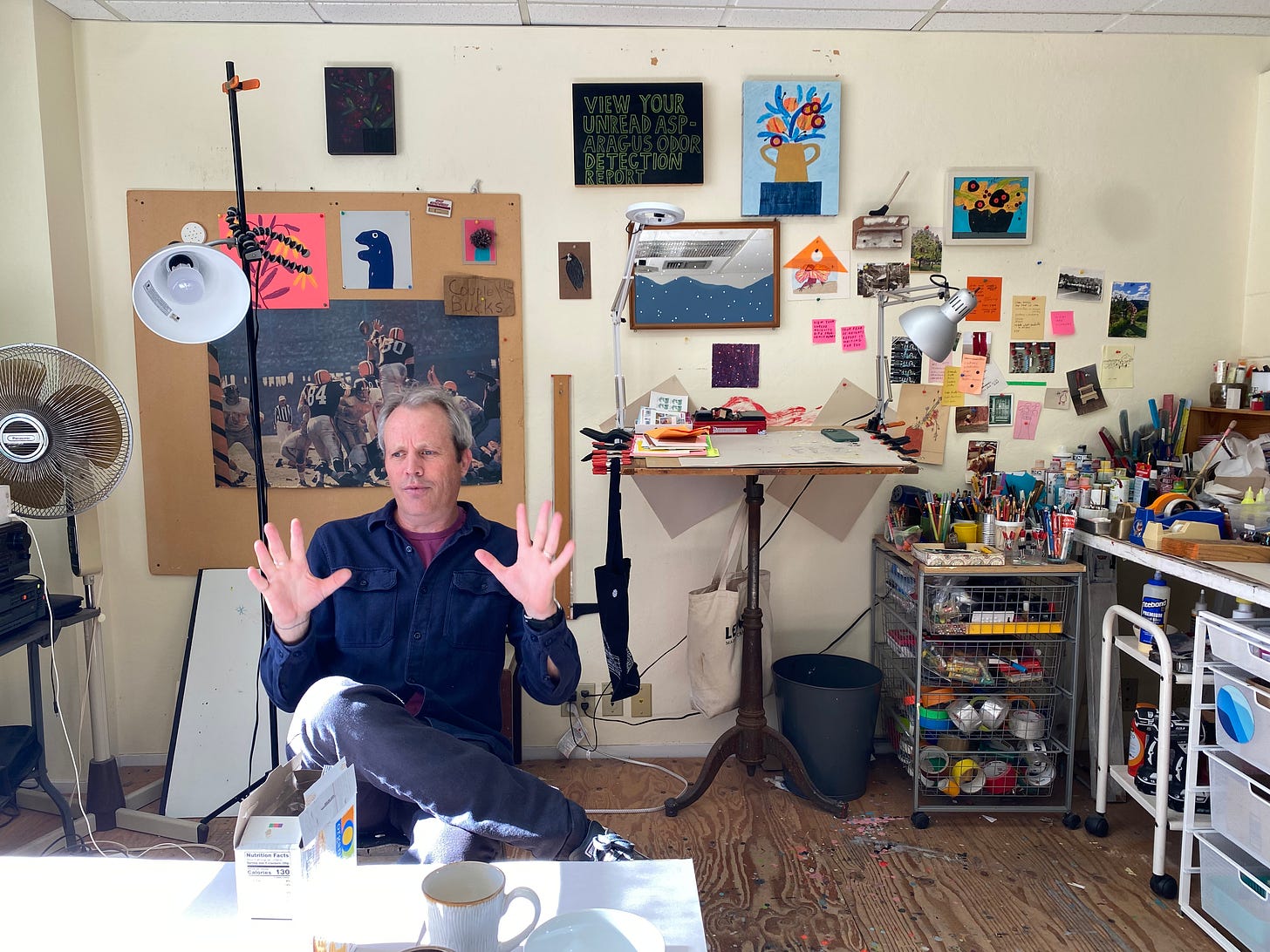
Tucker and I had a lovely chat about unexpected art materials and oil pastels and looking and noticing. Below are some highlights of our chat, some images to inspire, and an assignment to help fire up our noticing muscles. I’m sure you’ll find it as interesting and inspiring as I did, and I can’t wait to see what you find, and share.
Without further ado, here’s Tucker (part two!)
Tucker Nichols on Oil Pastels & Farm Animal “Paintstiks”
Tucker and I covered a lot of ground, but we started off talking oil pastels. When I mentioned the use of the medium in art therapy (and research to back it up), he wasn’t surprised. Tucker compared his own experience drawing with oil pastels to finger painting, describing the feeling of pulling the stick across the surface as “[cutting] deeper into the sternum” than other mediums. He said, “Oil pastels say something you can’t describe. The expression moves more through the body, and less through the brain.” (Yes, exactly!)
Even though he says there are a thousand reasons not to use them — they’re messy, not practical, stick together, etc — he still loves to use oil pastels in his paintings, often layering them over other media.
Tucker also introduced me to something I had never heard of: livestock markers. While at a residency in Wyoming 20 years ago, he visited a store with supplies for roping cattle and found these All Weather Paintstik Livestock Markers. They come in five vibrant colors: blue, green, orange, red, yellow. People use them to mark animal skin, fur, and feathers, and the mark will last through all kinds of weather. (Please always ask permission before drawing on animals!)
It’s a good reminder that anything can be an art medium: house paint, duct tape, red wine, you name it. If it makes a mark, it makes art.
Here are some inspiring oil-pastel inclusive drawings by Tucker. They make me smile.
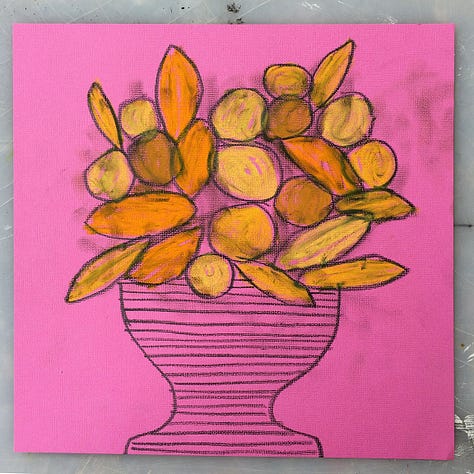
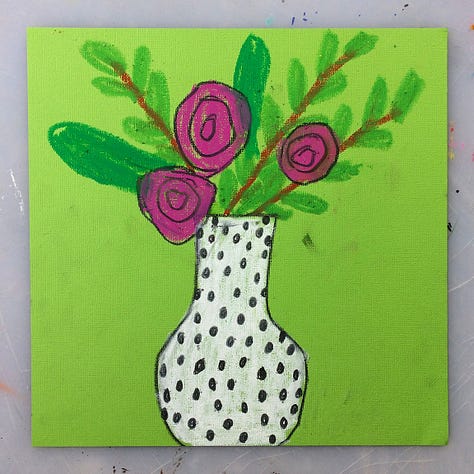
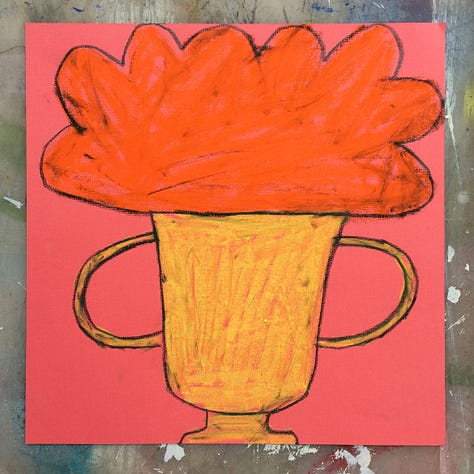

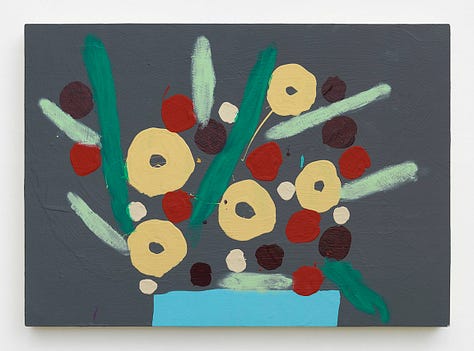
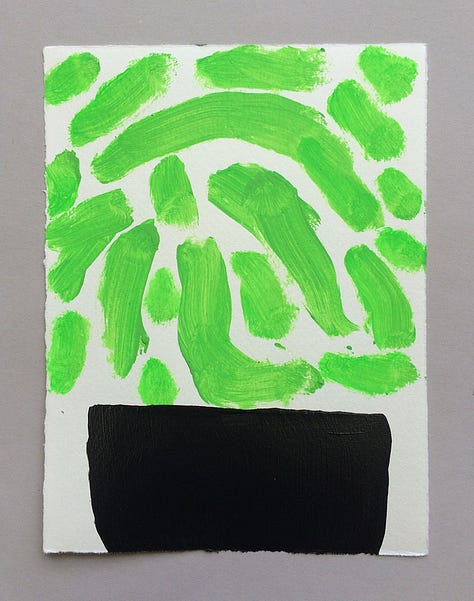
Tucker’s Noticing Practice
I love (LOVE!) that Tucker wanders into a cattle roping supply store and sees untapped potential for art-making. It’s a perfect example of one thing that makes Tucker the artist that he is: he notices things. He looks closely at the world and sees things that others don’t, and uses them to make art. He pays attention. And then shares what he sees. Reminds me of this wonderful snippet of a Mary Oliver poem:
Tucker’s attention is on full display in his amazing new book from McSweeney’s, Mostly Everything: The Art of Tucker Nichols, which came out this summer.
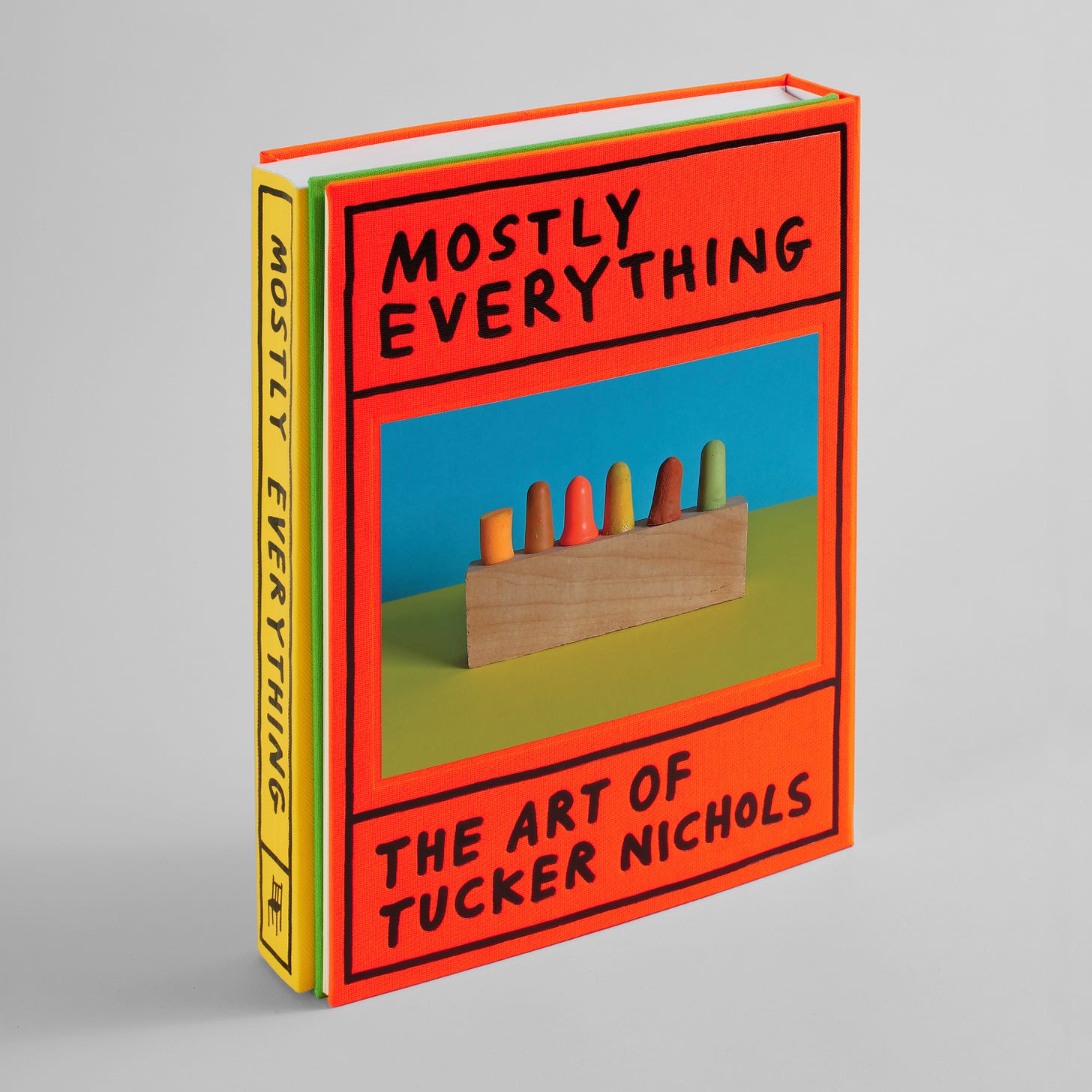
Unlike most other monographs, this one includes no text, no captions, no essays in this book. When I asked him why, he said, “Why include a bunch of essays nobody is going to read?” Funny. Sad. Probably true. (Side note: for the new art-people joining us, a monograph is a book that presents a survey of the work of one artist.)
Tucker worked on this book for two years with McSweeney’s incredible art director Sunra Thompson. The book is an art piece itself, organized into sections like “Diagrams” and “Creatures,” similar to the piles he showed us in a tour of his studio back when he was a guest artist.
My favorite works of Tucker’s remind us of the value of paying attention to the beauty around us. Yes to flowers of all kinds and for all sorts of people. His sculptures feature found objects, objects most people would overlook. He makes compositions that get us to look at these objects in new ways. Sometimes his work is silly or absurd. Thank goodness for art that makes us smile. But more, looking at his work sparks my brain to reconsider what is beautiful, and why. To make meaning of the everyday. He urges us to look again at an earplug or jar lid and imagine it anew. What a few earplugs can do!
When I asked him how he keeps his eyes sharp, he said by using them. As I’ve said before, the more you look, the more you’ll see.
Tucker’s work never fails to inspire us to “put on my art eyes”. Not just for the universally-acclaimed, empirically proven “beauty”, but for the things that reward our attention with surprise, wonder, and awe.
Assignment & Book Giveaway: UNEXPECTED AESTHETICS.
This week one lucky GUT member who shares their artwork in the GUT group chat will win a copy of Tucker’s new book, Mostly Everything. Thank you, McSweeney’s!
When I asked Tucker what he does to notice the world around him, he said he keeps his eyes sharp by looking. Walking around is like a treasure hunt where you can discover “accidental aesthetic choices” — when people have made decisions that are aesthetic but did not consider the aesthetics. For example, you could notice different color wires coming out of a wall, or people painting back over graffiti with colors that are almost right. “The aesthetics aren’t the purpose, but they end up being a result. … I look, and see those choices.”
It takes practice to develop that openness and attention. This week, I want you to go look, really look, and draw what you see. This week we’re doing a LOOKING treasure hunt, with categories inspired by Tucker’s work. Here’s how it works:



